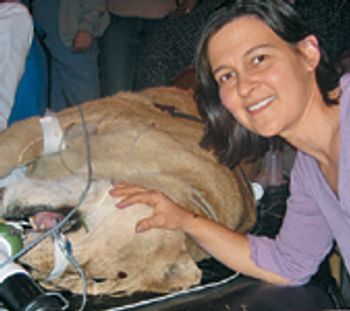
Communication strategies and tips for breaking difficult news to clients.
Department of Veterinary Clinical Medicine
College of Veterinary Medicine
University of Illinois
Urbana, IL 61802

Communication strategies and tips for breaking difficult news to clients.

The most difficult part of a tough diagnosis is telling your client. But if you view communication as a procedure you can master, your words become medical tools as well as bond-builders with pet owners.

Lymphoma (LSA) is one of the most common feline malignancies, comprising approximately 30% of all reported tumors. While not curable, LSA may respond quite well to therapy and can be a very satisfying neoplasm to treat.

One of the most common questions an oncologist hears from a pet owner is, "Why did my dog get cancer?" While it is often impossible to provide a specific answer for a specific patient, our understanding of why cancer develops has grown exponentially in the past decade. As are most things in the living organism, the causes are extremely complex, multifactorial, and still not completely understood.

Osteosarcoma (OSA) and hemangiosarcoma (HSA) are highly malignant tumors that have both a locally invasive and highly metastatic biologic behavior. Multimodality therapy must be employed to provide patients with these cancers the best chance for improved quality and quantity of life.

Cytology is a critical tool not only for the oncologist, but also for veterinarians in general practice. Cytology is easy, safe, fast, relatively inexpensive, and is often diagnostic.

Canine lymphoma (LSA) makes up approximately 18% of all malignancies in the dog, and 80% of all hematopoietic tumors in dogs are LSA. Middle-aged dogs are most commonly affected; but out of cancers affecting young dogs (as young as 6 months), LSA is common.

Speaking with pet owners is something veterinarians do constantly; as such, it is the most common "procedure" performed in veterinary medicine. Yet very few veterinarians receive any guidance in this critical area during veterinary school or after.

Chemotherapy safety can be broken down into two big categories: safety for the patient, and safety for the individuals handling the drugs. Understanding how chemotherapy works provides a background for knowing potential dangers of treatments as well as how to safely use these beneficial drugs.

Published: November 1st 2011 | Updated:

Published: April 1st 2010 | Updated:

Published: April 1st 2010 | Updated:

Published: April 1st 2010 | Updated:

Published: April 1st 2010 | Updated:

Published: April 1st 2010 | Updated: